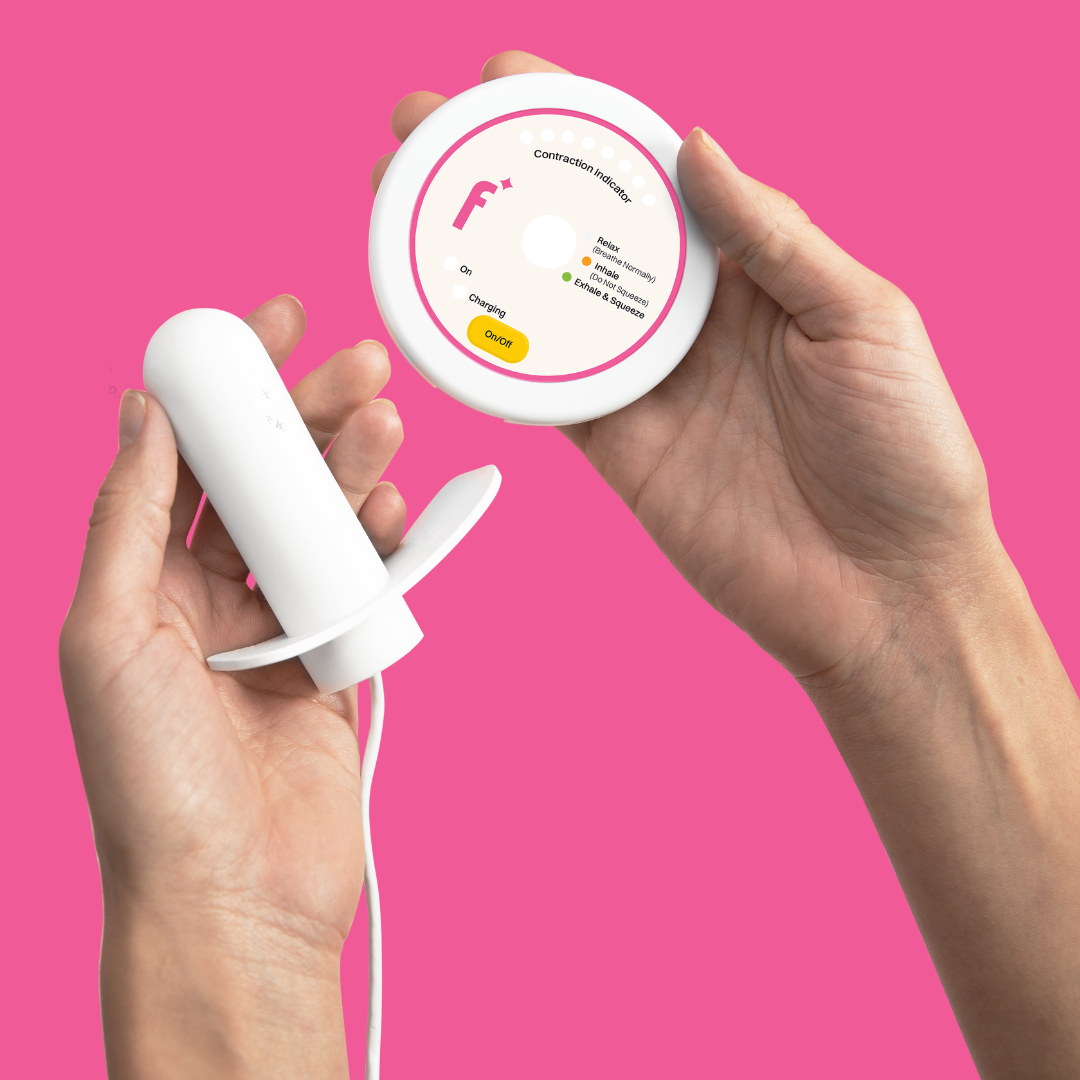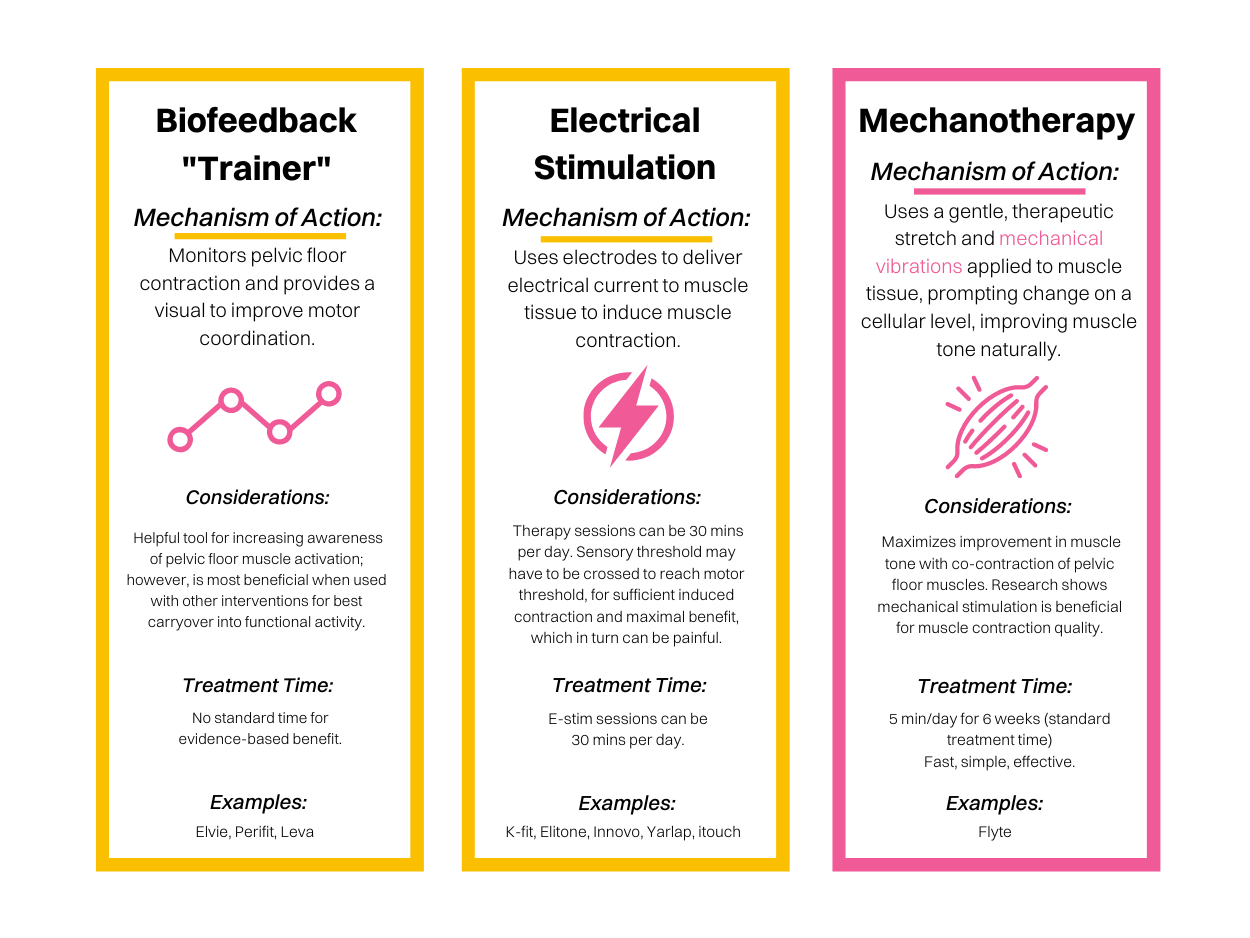How does Flyte compare to other devices?
Flyte® is not a passive device. It is an active therapy, using mechanotherapy to improve SUI and pelvic tone. It can be a standalone treatment or an adjunct treatment under your clinical expertise. With your expertise, therapies and Flyte®, your patient has the best offering to treat SUI and improve her quality of life.

Flyte vs other large studies on conservative intervention
Here, Flyte is compared to the mean of two studies, which like our US Clinical Study, enrolled > 100 patients and used 24-hr pad weight as their measures.
When comparing outcomes for mild and moderate severity of SUI, Flyte provided more than 2-4x the improvement of other non-surgical interventions, in a much shorter time frame.

Comparative studies only included mild to moderate severity of SUI, and therefore the Flyte data is shown for comparison. Full cohort data (mild to severe SUI) is also shown, to demonstrate Flyte’s significant ability to improve severe SUI.
Kari Bo, et. al; BMJ, 20 February 1999 looked at 4 treatment arms benefit for SUI:
- PFM Exercise (25): finding that PFM Exercise had the best outcomes
- Electrical Stim (25)
- Vaginal Cones (27)
- Control (30)
Kate S. Williams et. al; BJU International; June 2006 enrolled 238 patients in 3 arms and found no significant differences in treatment arms for improving SUI although improvement was seen:
- Vaginal Cones (80)
- Intensive PFMT (79)
- Behavioral Intervention (79)
Pelvic floor education and therapy are vital for comprehensive treatment, in many cases. Flyte can significantly speed up and improve the efficacy of pelvic floor therapy, freeing up the clinician to address a comprehensive plan of care with greater results.
What sets Flyte apart from other devices?
Flyte® is the only device that uses mechanotherapy to improve strength, tone, and coordination of the pelvic floor muscles to reduce or eliminate SUI.












